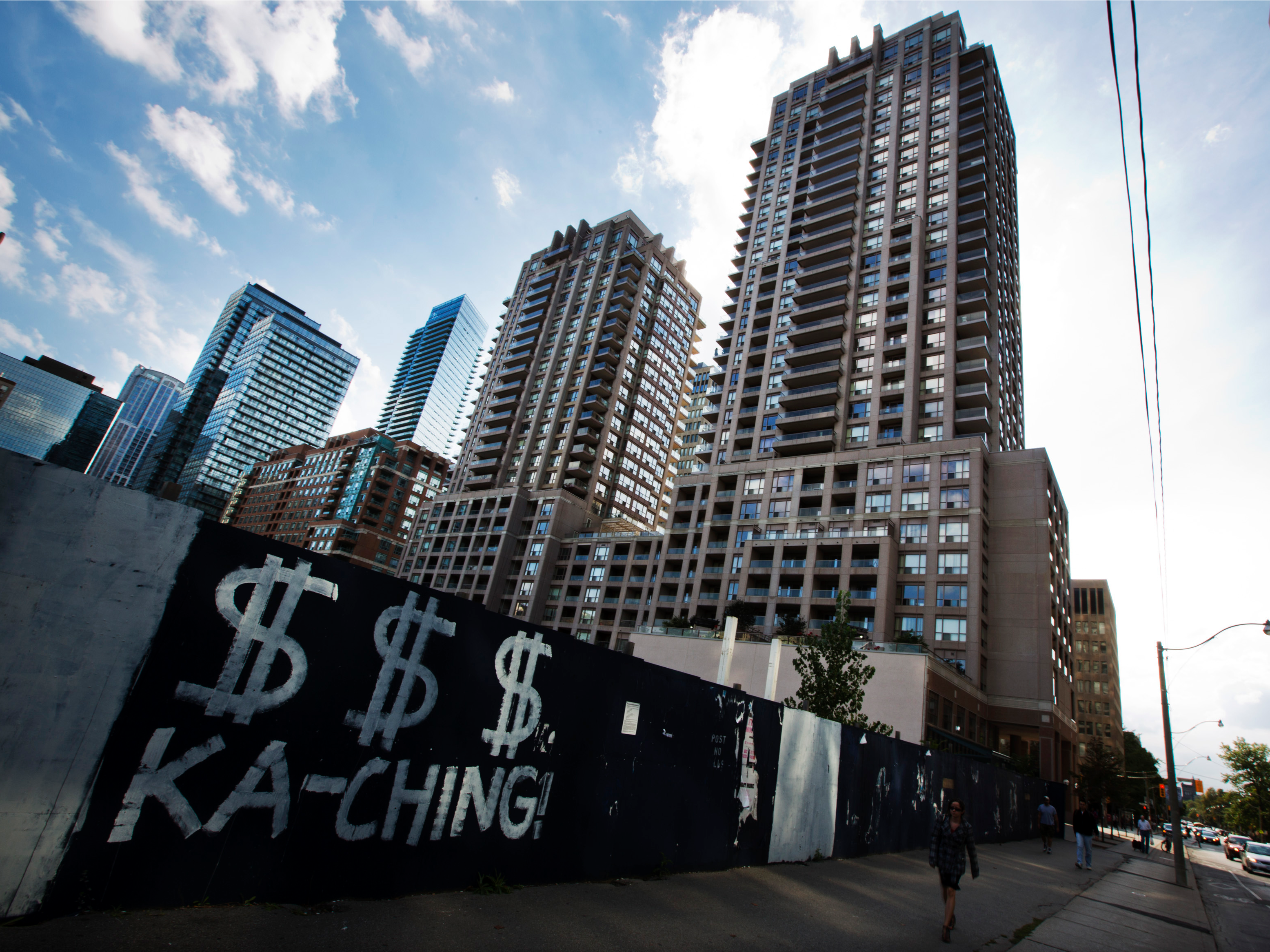Canada’s housing market has been red-hot. On a national level, home prices are up 14.22% versus a year ago and 76% since the world began to emerge from the global financial crisis in March 2009, according to the Teranet-National Bank House Price Index. Some local markets, like Hamilton and Toronto, have seen prices soar more than 25% year-over-year.
The explosion in Canada’s home prices has caused many to draw parallels between it and the US housing market in 2007. However, according to Goldman Sachs’ Economics Research team of Marty Young and Michael Cahill, “One important difference is with respect to the mortgage lending standards prevailing in the two times and places.”
In 2007, US lending standards were loosening as home prices were approaching their peak. But, in Canada, lending standards have been tightening since the financial crisis. Canadian banking regulators have been “reducing maximum LTV [loan-to-value] ratios and amortization terms, and, more recently, Vancouver and Toronto have introduced foreign buyer taxes to dampen house price growth,” write Young and Cahill. All of that has added up to a default rate well below that of the US.

At least in part to slow down its runaway housing market, the Bank of Canada raised its benchmark interest rate 25 basis points to 0.75% at its July meeting. By doing so, it became the first major central bank – aside from the US Federal Reserve – to raise rates following the financial crisis.
Doing so could cause some problems for Canadian homeowners. While those homeowners aren't as sensitive to a rate increase as their neighbors to the south, Canadian mortgages are structured with 25-year amortization schedules but 5-year terms. This means that they must get a new mortgage every five years, and are susceptible to interest rate increases.
"The lower baseline mortgage default rates in Canada, combined with stronger bank capitalization, suggest that a house price decline in Canada of the magnitude experienced in the US during 2007-2011 would likely pose smaller systemic risks than were realized in the US during the financial crisis period," Young and Cahill conclude.

